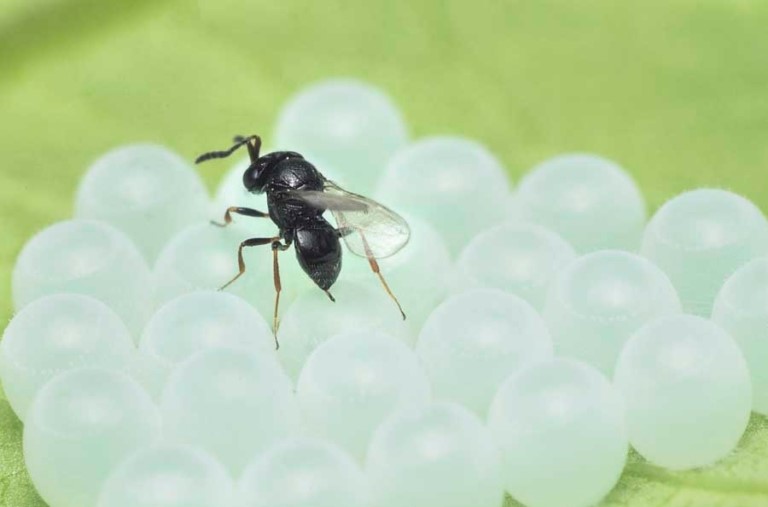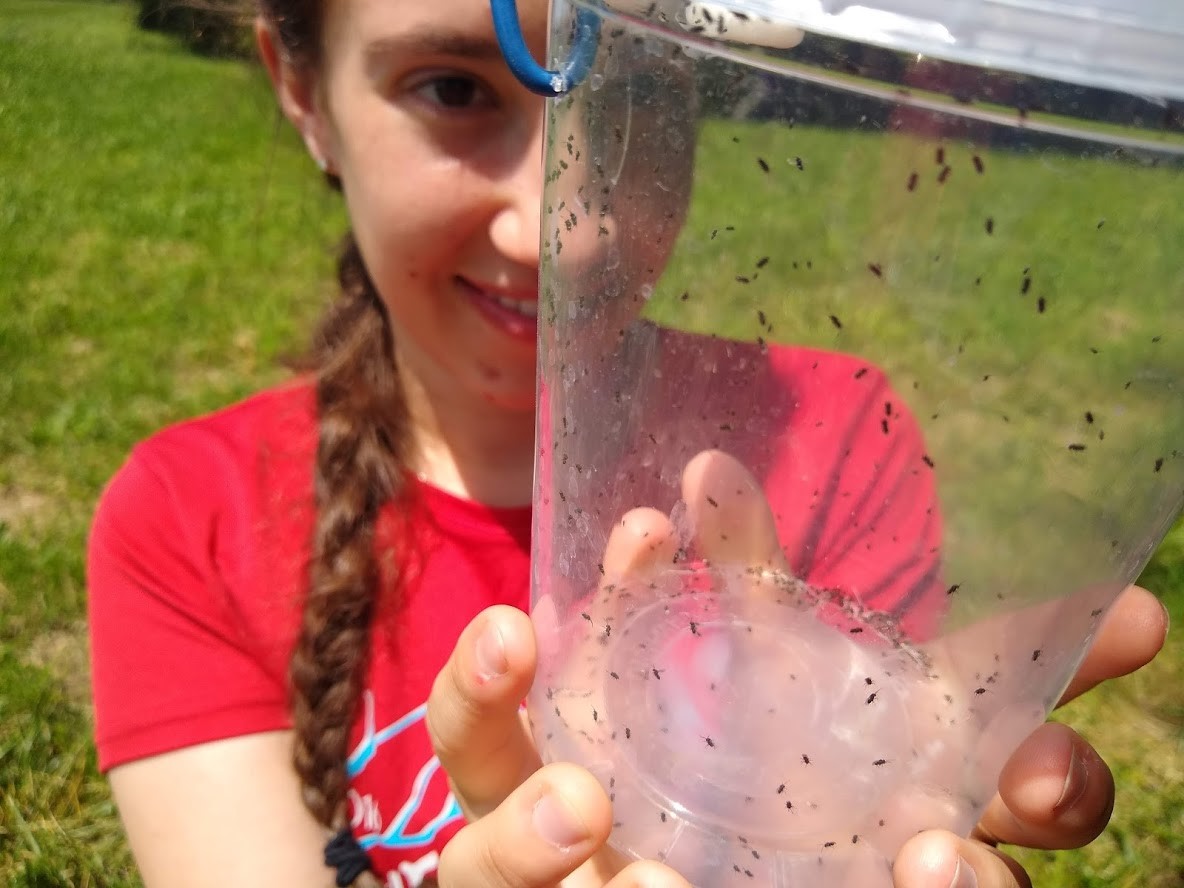Biological control of brown marmorated stink bug in Michigan
As a pest that feeds on a wide variety of fruits and vegetables, pest management of brown marmorated stink bugs likely means biological control.

Brown marmorated stink bug (BMSB), an invasive pest from Asia, has by now established across most of Michigan since its first detection in 2010. You can find them in all sorts of habitats from woodlots in the spring to orchards, vegetable crops, and your garden later in summer and in your house in winter. They have become ubiquitous because of their wide host range that includes over 300 plants allowing them to feed both on wild and cultivated hosts. This makes them also hard to control since large populations exist in natural areas from where they can recolonize crops after insecticide treatments. Brown marmorated stink bugs have become serious pests in apple and peach orchards and as their populations grow, other stone fruits and vegetables including tomatoes, peppers, green beans and sweet corn are at risk in Michigan.
For landscape level pests such as BMSB, biological control is usually the best option since natural enemies can follow stink bugs into all its different habitats. In 2018, a postdoctoral researcher, Benjamin Jarret, from my laboratory discovered the Samurai wasp (Trissolcus japonicus) in Michigan. This tiny wasp originates from the native range of BMSB in Asia and is well-adapted to parasitize it, unlike the native parasitoids in the USA. Females of Samurai wasp lay their eggs inside BMSB eggs and the larvae consume the entire BMSB embryo. Two to three weeks later, wasps will emerge from parasitized eggs instead of BMSB, and they go looking for new BMSB eggs to attack.

The wasps are tiny, only 1-2 millimeters (less than 1/8 of an inch) as adults and cannot sting people. This wasp is considered a highly effective biological control agent because it can parasitize 80-100% of the eggs in a BMSB egg mass and can produce multiple generations over a summer.
The Samurai wasp was not imported and released intentionally but likely arrived via the same route as BMSB. It was first detected in Maryland in 2014 and arrived at the neighboring state of Ohio by 2017. We used so-called sentinel eggs to find the wasp in Michigan. These are egg masses laid by laboratory colonies of stink bugs that we place in BMSB habitats. After 48 to 72 hours, the sentinel eggs are collected and in 14 to 30 days, wasps will emerge from them if they happened to be parasitized.

It took over 100 egg masses placed across lower Michigan to capture five wasps in summer 2018. From these five individuals, we have built a large colony in the laboratory, which now we use to augment Samurai wasp populations around at-risk crops. This summer, 4,000 adults were released at eight locations, and 88 parasitized BMSB egg masses were placed at four additional locations in lower Michigan. We use sentinel eggs at the release sites all through the summer to assess wasp establishment and we monitor BMSB populations using pyramid traps baited with stink bug lures to estimate the impact wasps may have on BMSB densities.
Similar efforts to augment populations of the Samurai wasp are underway in New York, Virginia, Ohio, Oregon and Washington. It will likely take years for the wasps to build up large enough densities in the wild to have a measurable impact on BMSB populations. We will continue monitoring and redistributing Samurai wasps in Michigan with further releases planned for 2020 to speed up population growth and increase the distribution of this important biological control agent.
This research is funded by the Department of Entomology at Michigan State University, MSU AgBioResearch, Project GREEEN, the Michigan Apple Committee, Michigan State Horticultural Society, the Michigan Vegetable Council and Nestle North America (Gerber).



 Print
Print Email
Email
